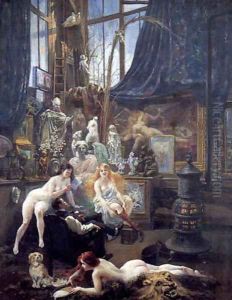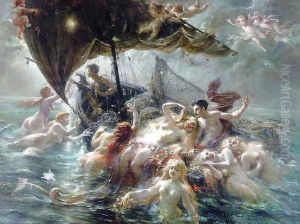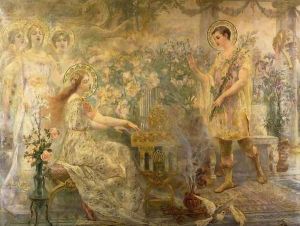Adolphe LaLyre (Lalire) Paintings
Adolphe LaLyre, sometimes also spelled Lalire, was a French painter known for his landscapes, still lifes, and figure paintings. Born in 1877, LaLyre's work was rooted in the traditions of the late 19th and early 20th centuries, and he developed his artistic skills during a period of great innovation in the art world.
LaLyre's career unfolded during an era where the artistic landscape was dominated by movements such as Impressionism, Post-Impressionism, and the beginnings of Modernism. While there is not a vast amount of detailed information readily available about his personal life or training, it is known that LaLyre's style was influenced by the Impressionist movement, which emphasized light and color over the precise realism that had dominated the previous eras of art.
His paintings often exhibit a soft, delicate touch with a rich palette and a focus on the interplay of light and shadow. LaLyre's landscapes capture the essence of the French countryside, with its lush greenery and tranquil settings. His still lifes are composed with a sense of harmony and tranquility, often featuring floral arrangements or everyday objects. In his figure paintings, LaLyre depicted the human form with a sense of grace and a gentle, lyrical quality.
Adolphe LaLyre's works were exhibited in various salons and galleries throughout his career, contributing to the artistic dialogue of his time. Despite the overshadowing fame of his contemporaries, LaLyre maintained a steady presence in the art community. His paintings have been appreciated for their serene beauty and classic charm, which have allowed them to remain of interest to collectors and art enthusiasts.
LaLyre passed away in 1956, leaving behind a body of work that continues to be appreciated for its quiet elegance and contribution to the traditions of French painting. Although he may not be as widely recognized as some of his peers, his art remains a testament to the enduring qualities of traditional painting techniques and the beauty of the French landscape and culture that inspired him.


